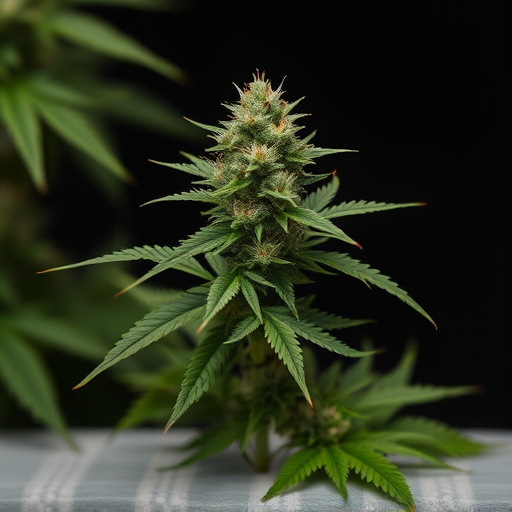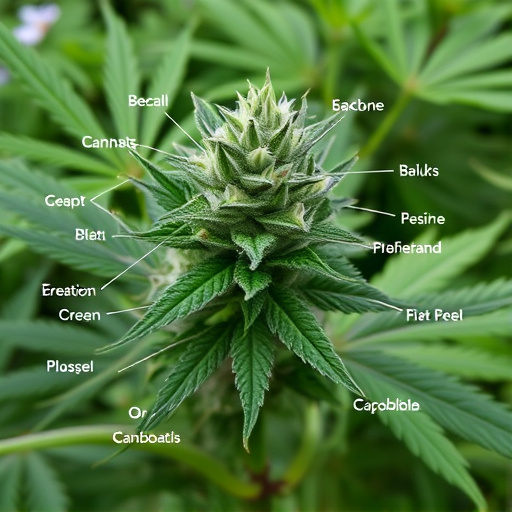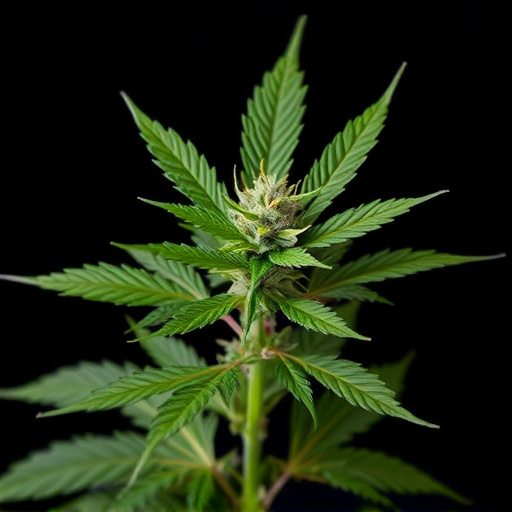The effects of cannabis on pain relief are highly variable, influenced by individual biochemistry, genetics, and environmental factors. Different strains, characterized by their cannabinoid and terpene profiles, offer diverse therapeutic benefits. Indica strains alleviate pain and anxiety, while Sativa strains enhance mental activity. Personal metabolism of cannabinoids like THC impacts the intensity of effects. Consulting experts is crucial for determining the most suitable strain, considering tolerance levels and pre-existing conditions. High-CBD strains provide chronic pain relief without intoxication, while higher THC strains aid muscle relaxation and sleep for conditions like arthritis or fibromyalgia.
Discover why weed impacts everyone uniquely. This profound variation in cannabis effects stems from a complex interplay between genetic predispositions and environmental influences on our endocannabinoid systems. Explore how these factors contribute to individual responses to cannabinoids, especially in managing specific pain conditions. Learn about the art of choosing the right strains for your unique needs, empowering you to harness cannabis effectively for relief.
- Understanding the Variability of Cannabis Effects
- Genetic and Environmental Factors in Cannabinoid Response
- Choosing Strains for Specific Pain Conditions
Understanding the Variability of Cannabis Effects

The effects of cannabis can vary greatly from person to person, depending on a multitude of factors. One of the primary considerations is the specific strain of cannabis being consumed. Different strains have unique compositions of cannabinoids and terpenes, which are responsible for their distinct aromas, flavors, and potential therapeutic benefits. For instance, Indica strains are often preferred for their calming effects, making them popular choices for managing pain, insomnia, and anxiety. In contrast, Sativa strains tend to stimulate mental activity and creativity while providing a more energizing experience.
Additionally, individual biochemistry plays a crucial role in how one responds to cannabis. The way our bodies metabolize cannabinoids like THC (tetrahydrocannabinol), the primary psychoactive compound, varies from person to person. These differences can lead to varying intensities of euphoria, relaxation, or potential side effects like increased heart rate or paranoia. Furthermore, pre-existing conditions and personal tolerance levels influence the overall experience, underscoring the importance of consulting experts or medical professionals when exploring strains of cannabis for pain relief or other therapeutic purposes.
Genetic and Environmental Factors in Cannabinoid Response

The way cannabis, or weed, affects individuals can vary greatly, and a significant contributor to this variation is the complex interplay between genetic and environmental factors. Our genetic makeup plays a crucial role in determining how our bodies process cannabinoids, the active compounds found in cannabis. For instance, variations in genes related to the endocannabinoid system, which is responsible for regulating numerous physiological processes, can influence an individual’s sensitivity to cannabis. This explains why some people might experience intense pain relief with certain strains of cannabis for pain while others may not have the same response.
Environmental factors, such as age, weight, gender, and overall health status, also significantly impact how one reacts to cannabis. For example, younger individuals might metabolize cannabinoids differently compared to adults or seniors. Additionally, people with pre-existing medical conditions may have varying responses based on their current medication use or underlying health issues. Understanding these genetic and environmental factors is essential for personalized cannabis therapy, especially when seeking specific strains of cannabis for pain management or other medicinal purposes.
Choosing Strains for Specific Pain Conditions

When it comes to using cannabis for specific pain conditions, choosing the right strain is crucial. Different strains of cannabis have distinct chemical compositions, with varying levels of THC (tetrahydrocannabinol) and CBD (cannabidiol), which can significantly impact how an individual experiences and responds to the plant. For instance, high-CBD strains are often sought after for their potential anti-inflammatory and analgesic properties, making them suitable for chronic pain relief without the intoxicating effects of THC.
On the other hand, strains with higher THC content may offer more pronounced muscle relaxation and sleep-inducing effects, beneficial for conditions like arthritis or fibromyalgia that cause both pain and muscle stiffness. It’s important to consider your specific needs and preferences when selecting a strain, as well as consult with a knowledgeable budtender or healthcare provider to ensure the best possible outcome.
The diverse effects of weed on individuals highlight the intricate relationship between genetics, environment, and cannabis chemistry. Understanding these variables empowers users to navigate the vast array of strains available, specifically targeting pain conditions. By recognizing individual responses, one can optimize their experience with the appropriate strain choices, ensuring both effectiveness and personal enjoyment.














